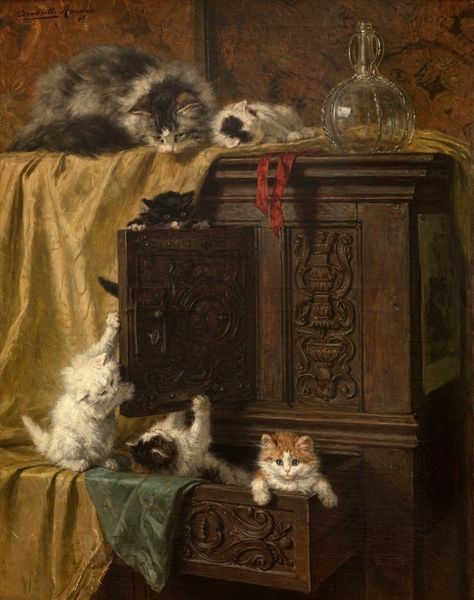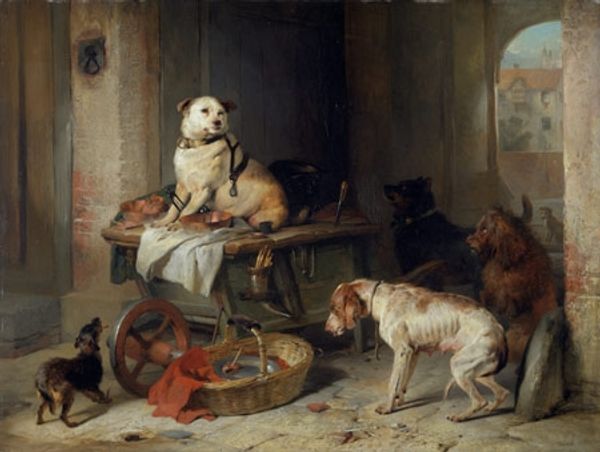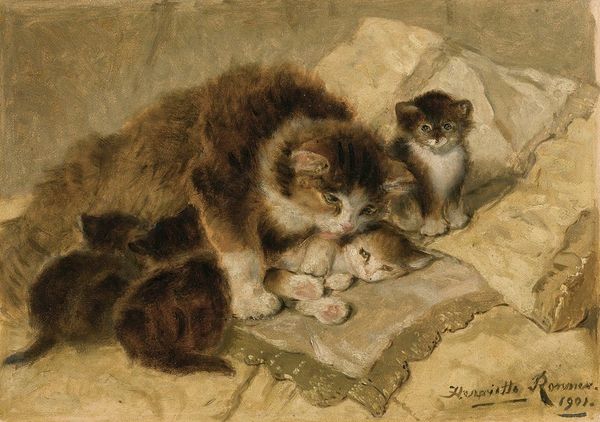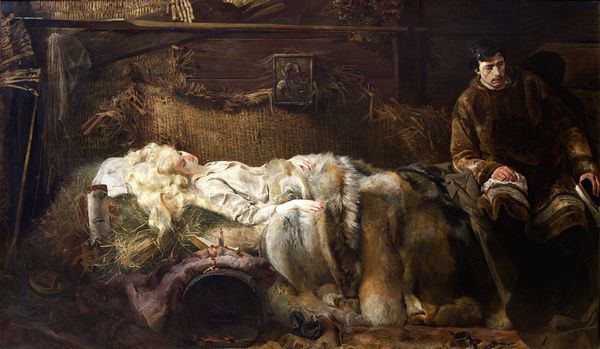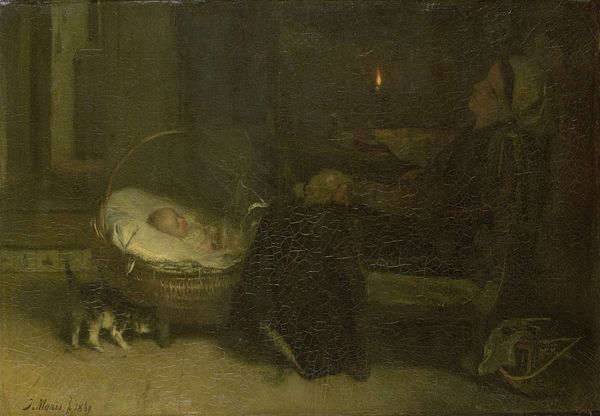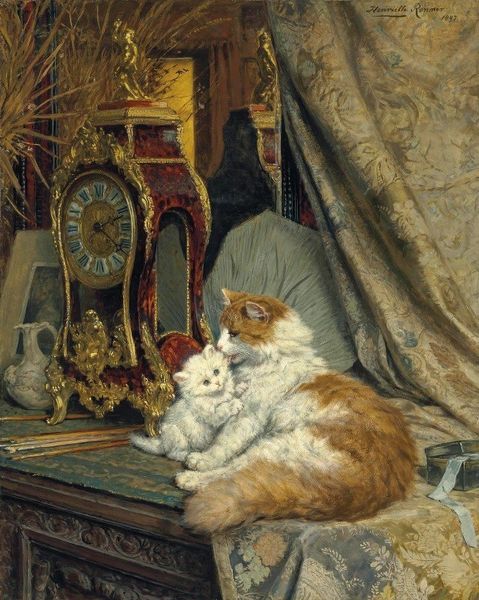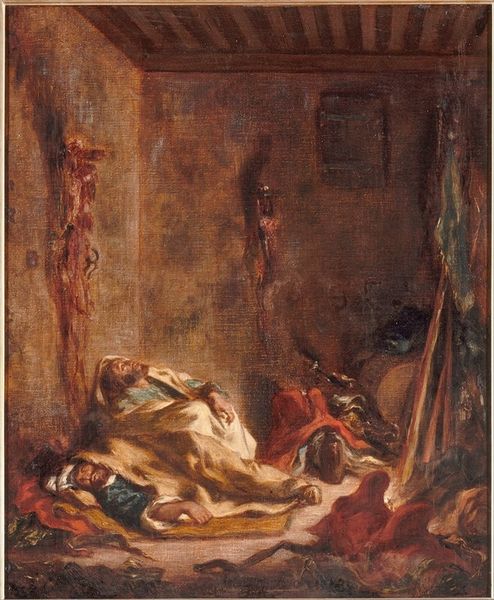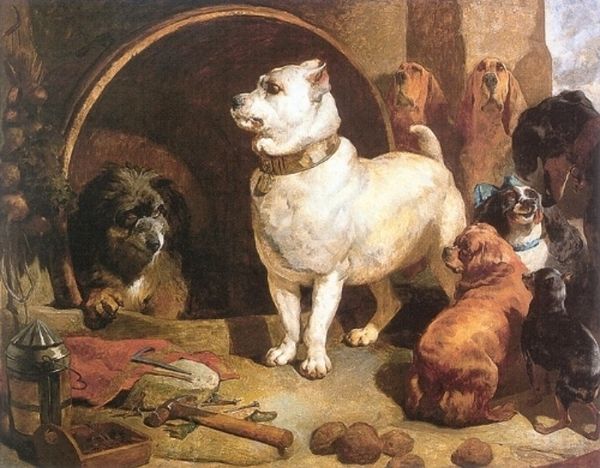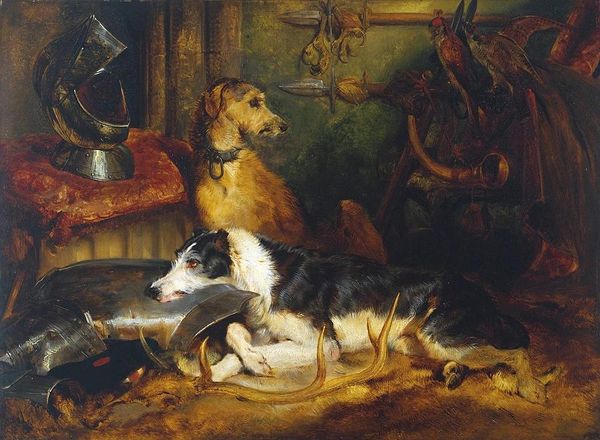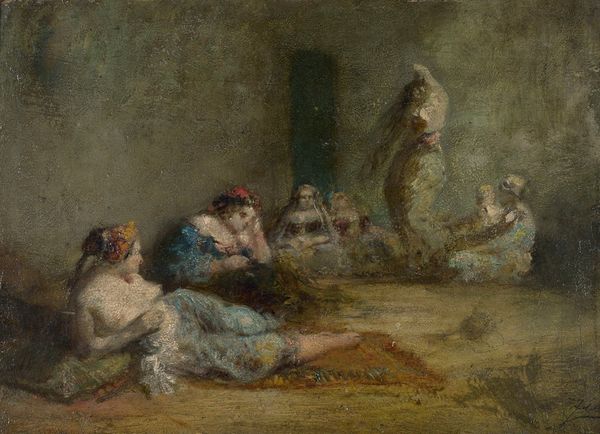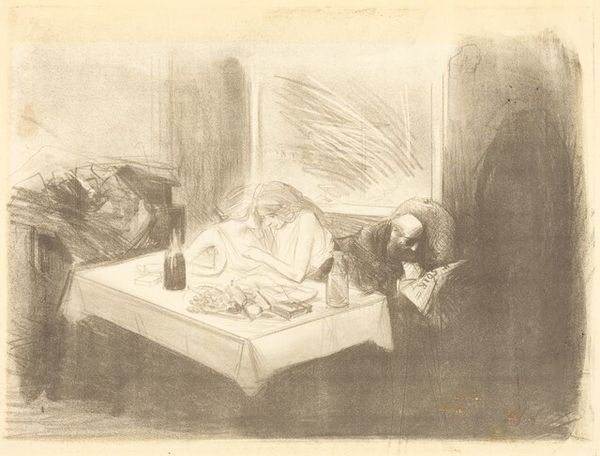
painting, oil-paint
#
portrait
#
animal
#
painting
#
oil-paint
#
oil painting
#
romanticism
#
animal portrait
#
genre-painting
#
realism
Copyright: Public Domain: Artvee
Curator: Let's consider "Kittens At Play", an oil painting attributed to Henriëtte Ronner-Knip. My immediate impression is that the composition, a domestic scene bathed in warm light, cultivates a sense of comfortable, almost idealized domesticity. Editor: There's a stark contrast for me. The scene speaks to a culture of conspicuous consumption. Oil paints, at that time, would be a material used almost exclusively for bourgeois subjects. The material conditions tell one side of the story. Curator: I see your point about material access. Yet, within the frame itself, observe how the artist arranges forms to create a visual rhythm. The curve of the umbrella mimics the curve of the cat's back. There’s a mirroring of forms in play, subtly reinforcing the harmony of the tableau. Editor: While I acknowledge the mirroring, I also want to suggest this aesthetic rendering deflects from the labor of artistic creation itself. How much did canvas cost, how much time, effort and money did the creation of this genre painting really require? This work valorizes certain modes of life over others. Curator: Granted, yet the artist's close observation is remarkable. The soft texture of the fur, the minute details in the floral arrangement, all these elevate the work beyond a mere genre scene. It’s in the details, the semiotic cues that establish a romantic aesthetic. Editor: But it does this *through* its relationship to things, the bouquet, the upholstered couch, each speaks to class. The flowers themselves speak to commerce, global trade, labor extraction… Curator: You always bring it back to that. Perhaps, though, can't we appreciate the sheer skill in rendering textures, regardless of what it represents? It is a testament to technical artistry, a manipulation of form. Editor: Precisely my point. Technique is always ideological, it is produced via material conditions, economic circumstances and a deep context we cannot simply look away from. Curator: Perhaps we are just destined to have these perspectives, you to material concerns, and I to formal structures. Editor: And it is those very formal structures that obscure production conditions in the first place.
Comments
No comments
Be the first to comment and join the conversation on the ultimate creative platform.
